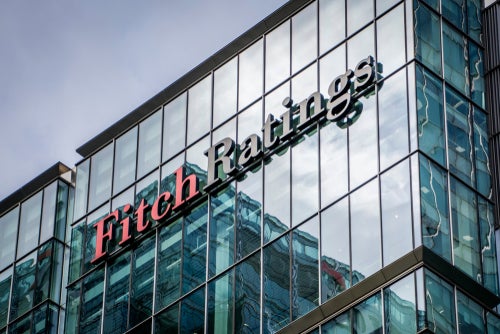
Euro Auctions MD Jonnie
Keys provides a snapshot of the global market for heavy plant and
machinery.
Much has changed in the
global market for used heavy plant and machinery in recent months.
An earthquake and tsunami has devastated large areas of north-east
Japan, while unrest and conflict have spread across North Africa
and the Middle East.
These catastrophic events
have taken their toll on the local population and economy and will
undoubtedly impact the global marketplace. In the face of such
human catastrophe, analysing their economic effects may seem
insensitive. However, it is clear these events will affect prices
for heavy plant and machinery.
How well do you really know your competitors?
Access the most comprehensive Company Profiles on the market, powered by GlobalData. Save hours of research. Gain competitive edge.

Thank you!
Your download email will arrive shortly
Not ready to buy yet? Download a free sample
We are confident about the unique quality of our Company Profiles. However, we want you to make the most beneficial decision for your business, so we offer a free sample that you can download by submitting the below form
By GlobalDataCautious optimism –
market in late 2010
By the end of 2010,
manufacturers of heavy plant and machinery were feeling more
confident. Manufacturers were again producing, although caution was
still a byword with the global construction market still depressed.
Mining was strong too.
At the end of 2010, stock
levels were also still low. By that time, the cost of brand new
equipment was 20% higher than prices in June 2009 and manufacturers
were capitalising on market demand by hiking prices.
Good second-hand equipment in
the UK is highly sought after, with owners hanging on to machines
for longer than usual. Prices strengthened for late-used and
nearly-new equipment – particularly in the 12-to-24 month class at
auction.
Used plant is now seen as a
global commodity – traded across the world where the demand is
highest and the currency is strongest. When demand decreases,
prices drop. When demand is high, prices hold strong. Add to this
the lack of supply through decreased manufacturing and you have a
volatile market.
North Africa
stalls
From mid-June 2009 to late
2010, the North Africa market created the next trend with the
demand for plant, machinery and equipment being extremely
buoyant.
Increasing demand from
countries in this region led to an improvement in buying prices at
auction, as these new entrants developed an appetite for smaller
excavators, dumpers and access equipment.
The high level of interest at
auction came from countries, such as Libya, Egypt, Morocco, Iraq,
Lebanon and Oman. The improvement in these markets was marked and
it was anticipated these countries would continue to show eventual
interest in larger pieces of equipment.
However, with the sad news of
unrest in North Africa, demand for plant and machinery came to a
grinding halt.
Mining
up
The global demand for raw
materials is driving the need for mining equipment. If it comes out
of the ground we need it. From copper to coal, and from ore to
shale fuel, the world wants it.
Much demand for mining
equipment come is coming from Australia – one of China’s key
trading partners. Australia wants heavy excavating, moving and
crushing machinery. This trend is likely not only to continue but
to increase dramatically.
Pacific Rim to favour
the home market
The recent cyclone and
flooding in Queensland, Victoria and New South Wales, has increased
demand for plant and machinery in Australia. The clean-up
operation, coupled with increased demand for mined materials means
that Australia is now buying strongly.
Recent tragic events in Japan
are expected to set back manufacturing in the country, although it
is hard to predict for how long. It is anticipated that an
inability to supply certain equipment, will lead to a market
shortage and push up prices.
The Japanese home market will
put huge demands on stocks of equipment for the rebuilding
programme, the ripples of which will be felt across the global
economy. The price of second-hand Japanese equipment is also
expected to rise around the globe. This will become evident at the
next Euro Auctions sale.
Eastern Europe still
strong
Large construction and
roadway projects in Poland are keeping machine operators, hire
companies and contractors busy, with many organisations buying
plant and machinery for that market.
Poland has always maintained
a good presence at auction and players from that market are
interested in a complete cross section of plant and machinery with
the emphasis being on earth moving equipment.
Meanwhile, Russia is back
buying plant and machinery after an absence of about two
years.
US
shortage
The US market is experiencing
a shortage of equipment. They are still producing machines, but not
in a capacity that is satisfying the demands of the home
market.
Consequently, US buyers are
now in Europe looking for stock and favouring the pound as opposed
to the euro.
American buyers have become
more apparent at auction in the past three months after an absence
of some 12 to 18 months. Buyers from the US are looking for large
heavy mining equipment for the home open-cast coal and iron ore
extraction market, as well as for the oil sands of
Alaska.
A new trend in the market is the extraction of shale gas
from vast reserves in the US. There have been predictions that
shale gas could break the dependency of the US on the Middle East
for oil. In the US, big dump trucks for the contracting market are
always on buyers’ shopping lists.






